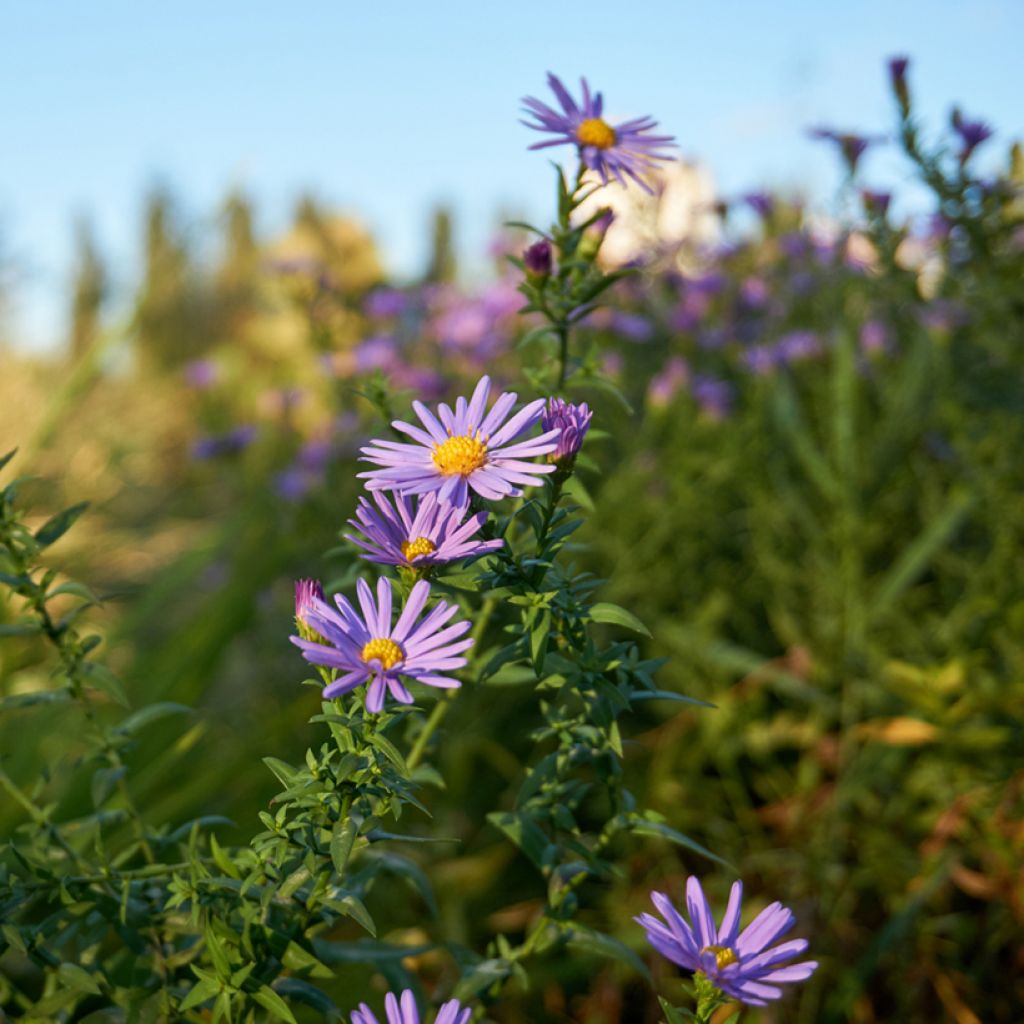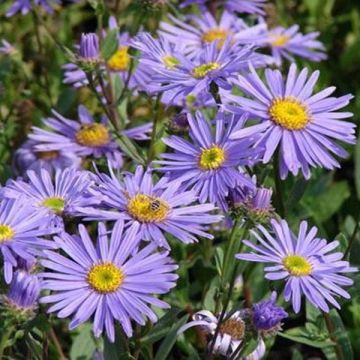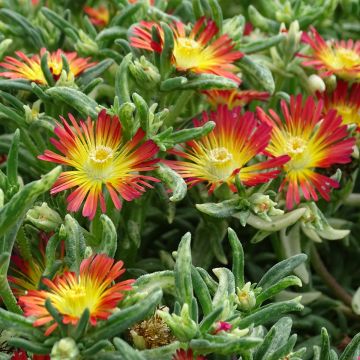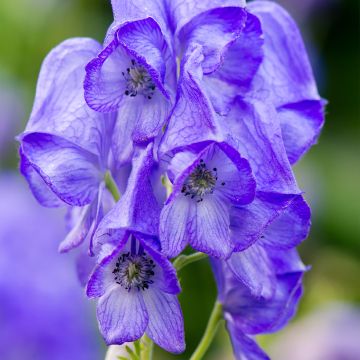

Aster oblongifolius October Skies


Aster oblongifolius October Skies


Aster oblongifolius October Skies


Aster oblongifolius October Skies


Aster oblongifolius October Skies


Aster oblongifolius October Skies


Aster oblongifolius October Skies


Aster oblongifolius October Skies
Aster oblongifolius October Skies
Aster oblongifolium October Skies
Aromatic American Aster, Fall Aster, Wild Blue Aster, Shale Barren Aster
Planted in spring, devoured by slugs, what a shame...
Marie-Aline, 29/07/2025
Special offer!
Receive a €20 voucher for any order over €90 (excluding delivery costs, credit notes, and plastic-free options)!
1- Add your favorite plants to your cart.
2- Once you have reached €90, confirm your order (you can even choose the delivery date!).
3- As soon as your order is shipped, you will receive an email containing your voucher code, valid for 3 months (90 days).
Your voucher is unique and can only be used once, for any order with a minimum value of €20, excluding delivery costs.
Can be combined with other current offers, non-divisible and non-refundable.
Home or relay delivery (depending on size and destination)
Schedule delivery date,
and select date in basket
This plant carries a 12 months recovery warranty
More information
We guarantee the quality of our plants for a full growing cycle, and will replace at our expense any plant that fails to recover under normal climatic and planting conditions.
Would this plant suit my garden?
Set up your Plantfit profile →
Description
Aster oblongifolius 'October Skies', is a robust perennial that transforms into a cushion of large, vivid flowers with a rich deep sky blue colour and a dark yellow centre reminiscent of daisies between August and October or November. Its bluish-green foliage is aromatic when crushed, and its nectar-rich flowers attract butterflies. It is not very tall, so ideal for replacing summer perennials in pots or in borders. Easy to grow in sunny, sandy or clayey, moist to dry but well-drained soil, this aster has good longevity. It is drought-resistant and tolerates poor soils. It is also a beautiful cut flower.
Closely related to asters, the Symphyotrichum oblongifolium also belongs to the Asteraceae (formerly Compositae) family, which mainly consists of herbaceous plants. It is native to North America, from the eastern Rocky Mountains, where it grows in dry meadows and rocky slopes. The 'October Skies' cultivar, with a compact habit, establishes itself quite slowly and reaches 45-50 cm (18-20in) in all directions. It blooms in August or September and lasts until the first frost. Its lanceolate, blue-green foliage is aromatic when crushed. Its autumnal flowers, in vibrant colours, consist of numerous small heads resembling daisies, 4 cm (2in) in diameter, with a rich deep sky blue colour and a dark yellow centre. Deciduous and very hardy, it regrows from its crown each spring.
Aster oblongifolius 'October Skies' thrives in sunny locations with well-drained soil, even fairly dry in summer. Provide good air circulation to prevent powdery mildew. It is perfect for creating charming autumn scenes, combined with golden or coppery grasses, tall Sedums, and Echinaceas. Its relatives, the Chrysanthemums with brightly coloured heads, in pink, purple, orange, or white, give a richer appearance to the flowerbed. It can also be used in rockeries, borders, or containers to brighten up the surroundings of your house, maybe in front of your windows.
Report an error about the product description
Flowering
Foliage
Plant habit
Botanical data
Aster
oblongifolium
October Skies
Asteraceae
Aromatic American Aster, Fall Aster, Wild Blue Aster, Shale Barren Aster
Symphyotrichum oblongifolium
Cultivar or hybrid
Other Asters
View all →Planting and care
Plant Aster oblongifolius October Skies in autumn or spring, choose a sunny or semi-shady exposure, as asters do not generally appreciate shade and need sun to flower well. To prevent the stems from bending, find a location sheltered from strong winds, near a hedge or wall for example. The type of soil does not matter much if you ensure good drainage by adding some gravel mixed with the soil when planting. Remember to keep some moisture at the base of your perennials by mulching your flower beds from June onwards to ensure the flowering of this aster is even more beautiful at the end of summer.
Planting period
Intended location
Care
-
, onOrder confirmed
Reply from on Promesse de fleurs
Similar products
Haven't found what you were looking for?
Hardiness is the lowest winter temperature a plant can endure without suffering serious damage or even dying. However, hardiness is affected by location (a sheltered area, such as a patio), protection (winter cover) and soil type (hardiness is improved by well-drained soil).

Photo Sharing Terms & Conditions
In order to encourage gardeners to interact and share their experiences, Promesse de fleurs offers various media enabling content to be uploaded onto its Site - in particular via the ‘Photo sharing’ module.
The User agrees to refrain from:
- Posting any content that is illegal, prejudicial, insulting, racist, inciteful to hatred, revisionist, contrary to public decency, that infringes on privacy or on the privacy rights of third parties, in particular the publicity rights of persons and goods, intellectual property rights, or the right to privacy.
- Submitting content on behalf of a third party;
- Impersonate the identity of a third party and/or publish any personal information about a third party;
In general, the User undertakes to refrain from any unethical behaviour.
All Content (in particular text, comments, files, images, photos, videos, creative works, etc.), which may be subject to property or intellectual property rights, image or other private rights, shall remain the property of the User, subject to the limited rights granted by the terms of the licence granted by Promesse de fleurs as stated below. Users are at liberty to publish or not to publish such Content on the Site, notably via the ‘Photo Sharing’ facility, and accept that this Content shall be made public and freely accessible, notably on the Internet.
Users further acknowledge, undertake to have ,and guarantee that they hold all necessary rights and permissions to publish such material on the Site, in particular with regard to the legislation in force pertaining to any privacy, property, intellectual property, image, or contractual rights, or rights of any other nature. By publishing such Content on the Site, Users acknowledge accepting full liability as publishers of the Content within the meaning of the law, and grant Promesse de fleurs, free of charge, an inclusive, worldwide licence for the said Content for the entire duration of its publication, including all reproduction, representation, up/downloading, displaying, performing, transmission, and storage rights.
Users also grant permission for their name to be linked to the Content and accept that this link may not always be made available.
By engaging in posting material, Users consent to their Content becoming automatically accessible on the Internet, in particular on other sites and/or blogs and/or web pages of the Promesse de fleurs site, including in particular social pages and the Promesse de fleurs catalogue.
Users may secure the removal of entrusted content free of charge by issuing a simple request via our contact form.
The flowering period indicated on our website applies to countries and regions located in USDA zone 8 (France, the United Kingdom, Ireland, the Netherlands, etc.)
It will vary according to where you live:
- In zones 9 to 10 (Italy, Spain, Greece, etc.), flowering will occur about 2 to 4 weeks earlier.
- In zones 6 to 7 (Germany, Poland, Slovenia, and lower mountainous regions), flowering will be delayed by 2 to 3 weeks.
- In zone 5 (Central Europe, Scandinavia), blooming will be delayed by 3 to 5 weeks.
In temperate climates, pruning of spring-flowering shrubs (forsythia, spireas, etc.) should be done just after flowering.
Pruning of summer-flowering shrubs (Indian Lilac, Perovskia, etc.) can be done in winter or spring.
In cold regions as well as with frost-sensitive plants, avoid pruning too early when severe frosts may still occur.
The planting period indicated on our website applies to countries and regions located in USDA zone 8 (France, United Kingdom, Ireland, Netherlands).
It will vary according to where you live:
- In Mediterranean zones (Marseille, Madrid, Milan, etc.), autumn and winter are the best planting periods.
- In continental zones (Strasbourg, Munich, Vienna, etc.), delay planting by 2 to 3 weeks in spring and bring it forward by 2 to 4 weeks in autumn.
- In mountainous regions (the Alps, Pyrenees, Carpathians, etc.), it is best to plant in late spring (May-June) or late summer (August-September).
The harvesting period indicated on our website applies to countries and regions in USDA zone 8 (France, England, Ireland, the Netherlands).
In colder areas (Scandinavia, Poland, Austria...) fruit and vegetable harvests are likely to be delayed by 3-4 weeks.
In warmer areas (Italy, Spain, Greece, etc.), harvesting will probably take place earlier, depending on weather conditions.
The sowing periods indicated on our website apply to countries and regions within USDA Zone 8 (France, UK, Ireland, Netherlands).
In colder areas (Scandinavia, Poland, Austria...), delay any outdoor sowing by 3-4 weeks, or sow under glass.
In warmer climes (Italy, Spain, Greece, etc.), bring outdoor sowing forward by a few weeks.



















































